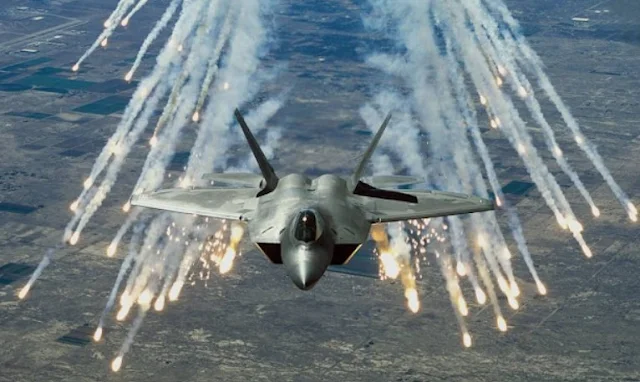 |
| The US Air Force F-22 Raptor |
International Military - F-22 Raptor is the world's first 5th generation stealth fighter jet. With a combination of stealth, speed, agility, weaponry makes the F-22 Raptor very lethal in the air. Interesting Engineering said that this aircraft was first developed in 1997.
The F-22 Raptor was the most powerful fighter jet at that time, combining supercruise functionality, supermaneuverability. and sensor fusion. Built with stealth capabilities not without reason, the Raptor can operate very “hidden”.
Aircraft design with wings that are perfectly aligned with the horizontal stabilizer. The design was built to reduce radio emissions, infrared signals, acoustic signals so that they are difficult to detect by radar. Fly with two Pratt & Whitney F119-PW-100 turbofan engines with afterburners and nozzle thrust vectoring.
With that engine, the F-22 Raptor can accelerate to speeds of Mach 2. Flying a supercruise can even maintain its supersonic speed without the use of afterburners. Built to control airspace, the F-22 Raptor is armed with six Raytheon AIM-120 medium-range air-to-air missiles and two AIM-9M Sidewinder short-range air-to-air missiles. Coupled with a 20 mm M61A2 gatling gun with 480 rounds.
To stay relevant to modern combat, the F-22 Raptor is constantly being modernized. As is well known, the Raptor will serve as a "bridge" for the next generation of fighter jets.
Secretary of the Air Force Frank Kendall said, “The Raptor is the air dominance solution to Next-Generation Air Dominance (NGAD)”. To keep this first stealth fighter jet strong now and in the future, a program called RACR was created. RACR stands for Raptor Agile Capability Release.
Quoted from The DRIVE, this RACR program will upgrade the software and sometimes make minor changes to the hardware. "The goal is to make the Raptor even faster than it was when he was first built," explains Major Autrey.
The F-22 Raptor modernization program will be divided into several phases, the first being the R1. The R1 will focus on both hardware and software updates.
The DRIVE said the R1 phase itself is divided into three, first is initial operational test support to development testing and operational testing with initial and non-field capabilities.
The second includes special operational testing during mission test events. And lastly is post-drop monitoring. The testing of the R1 phase is expected to be completed on August 16, 2021. Then for the second phase, R2, which is now entering operational testing. The R2 itself includes much of the software on the new AIM-260 Combined Air Tactical Missile (JATM).
It is known that the new technology in JATM is far more advanced than that of the notorious AIM-120 AMRAAM missile. Then the third phase or R3, includes software on the data link and some improvements to existing sensors.
